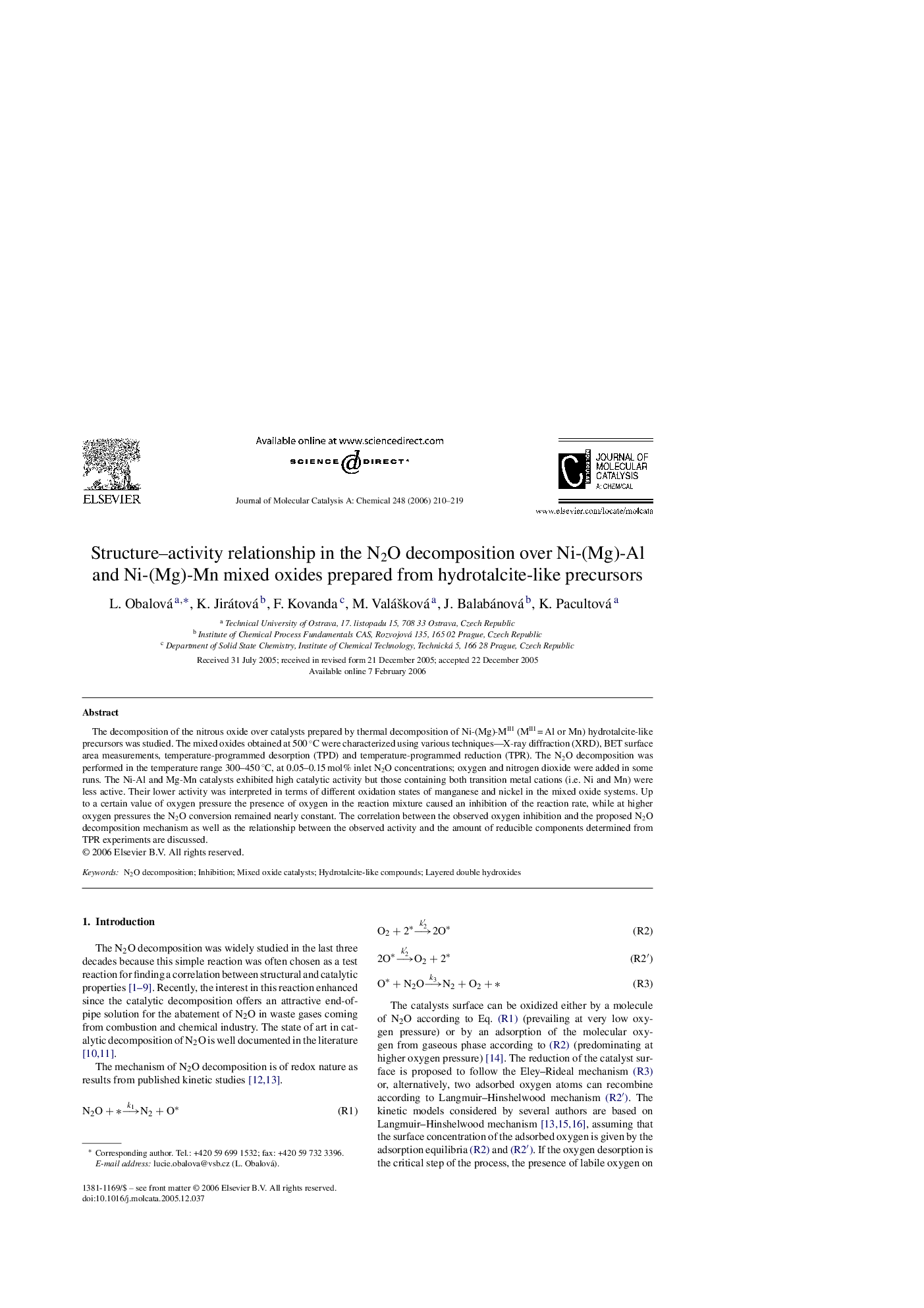| کد مقاله | کد نشریه | سال انتشار | مقاله انگلیسی | نسخه تمام متن |
|---|---|---|---|---|
| 69199 | 48532 | 2006 | 10 صفحه PDF | دانلود رایگان |

The decomposition of the nitrous oxide over catalysts prepared by thermal decomposition of Ni-(Mg)-MIII (MIII = Al or Mn) hydrotalcite-like precursors was studied. The mixed oxides obtained at 500 °C were characterized using various techniques—X-ray diffraction (XRD), BET surface area measurements, temperature-programmed desorption (TPD) and temperature-programmed reduction (TPR). The N2O decomposition was performed in the temperature range 300–450 °C, at 0.05–0.15 mol% inlet N2O concentrations; oxygen and nitrogen dioxide were added in some runs. The Ni-Al and Mg-Mn catalysts exhibited high catalytic activity but those containing both transition metal cations (i.e. Ni and Mn) were less active. Their lower activity was interpreted in terms of different oxidation states of manganese and nickel in the mixed oxide systems. Up to a certain value of oxygen pressure the presence of oxygen in the reaction mixture caused an inhibition of the reaction rate, while at higher oxygen pressures the N2O conversion remained nearly constant. The correlation between the observed oxygen inhibition and the proposed N2O decomposition mechanism as well as the relationship between the observed activity and the amount of reducible components determined from TPR experiments are discussed.
The decomposition of the nitrous oxide over catalysts prepared by thermal decomposition of Ni-(Mg)-MIII (MIII = Al or Mn) hydrotalcite-like precursors was studied. The Ni-Al and Mg-Mn catalysts exhibited high catalytic activity but those containing both transition metal cations (i.e. Ni and Mn) were less active. The activities of catalysts are connected with both the oxidation states of Ni and Mn and the amount of reducible components in the temperature range when the N2O decomposition proceeds. Up to a certain value of oxygen pressure, the presence of oxygen in the reaction mixture caused an inhibition of the reaction rate, while at higher oxygen pressures the N2O conversion remained nearly constant. Figure optionsDownload as PowerPoint slide
Journal: Journal of Molecular Catalysis A: Chemical - Volume 248, Issues 1–2, 3 April 2006, Pages 210–219